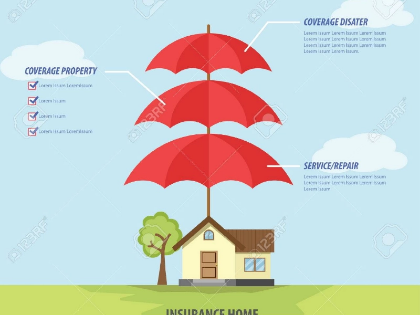Senior Health Insurance: Medicare and Beyond
The majority of seniors have access to Medicare, a federal program that covers a range of medical requirements through sections A, B, C, and D. Many also get coverage from their employer, union, or private supplemental insurance.
Supplemental plans, which range greatly in price, concentrate on filling in the gaps in Medicare coverage. Dual Special Needs Plans, which combine Medicaid and Medicare Advantage, are a common option for elderly beneficiaries with supplemental coverage.
Medicare

Most adults 65 years of age or older, as well as certain younger recipients with impairments, can obtain federal health insurance under the Medicare program. In addition to covering hospital stays and outpatient care, it has annual deductibles, coinsurance costs, and a premium.
In order to lower their out-of-pocket expenses, people with standard Medicare often select private health insurance policies that work in conjunction with Medicare or supplemental coverage, sometimes referred to as Medigap. Over the past few years, there has been a decrease in the proportion of regular Medicare members lacking supplemental coverage.
A significant portion of beneficiaries have signed up for Medicare Advantage (Part C) plans, which are provided by commercial insurance providers and frequently provide Parts A and B in addition to dental, eye, and hearing benefits. The cost and benefits of these programs might differ significantly, ranging from provider networks to additional features like meal delivery, transportation, or toilet safety equipment. Reaching scale and cutting administrative costs are challenges for Medicare Advantage payers under margin pressure. Tens of thousands of beneficiaries' access to healthcare is being disrupted by some who are making cutbacks, reducing their offers, or raising rates.
Medicaid

Medicaid is an entitlement program that pays for a large number of medical costs that people cannot afford to pay for themselves without private insurance. For many persons who meet eligibility requirements, such as a modest income test, as well as children, parents, and caregivers of children, it serves as their primary source of coverage. The federal government establishes broad coverage limits and covers a fixed proportion of program expenditures for all eligible participants (referred to as the "federal medical assistance percentage," or FMAP). States are given considerable latitude in creating their own systems within these constraints.
The program offers a broad range of services, including long-term home and community-based supports as well as hospital treatment. For enrollees who qualify for both Medicaid and Medicare (referred to as dual eligibles), it also helps with the cost of Medicare premiums, deductibles, and coinsurance. Compared to those with private insurance, Medicaid recipients use fewer services overall, but they are more likely to obtain critical preventive care, according to several thorough studies.
Individual Insurance

Private health insurance provides more benefits than Medicare, whether it is obtained through employer-sponsored insurance or as supplemental Medicare coverage (Medicare Advantage, Part C). These include mental health treatments, prescription drugs, doctor visits and consultations, and hospital services. Care taken outside of a network is typically covered by private insurance, although the cost is frequently higher than if it is received inside the network.
From 1977 to 1991, the percentage of senior citizens having independently acquired supplemental insurance stayed constant at or above 40%. In a similar vein, the portion on Medicare alone has likewise stayed largely steady, averaging 11% in the age ranges of 65–69 and 85 and above.
Many senior citizens require assistance in comprehending the difficult choices and obstacles related to healthcare in later life. Applications for Medicare enrollment are accepted by the Social Security Administration three months prior to a person's 65th birthday. Free resources are also available year-round through NY Connects and the Health Insurance Information, Counseling and Assistance Program (HIICAP).
Extended-Duration Care

Many more people are predicted to need long-term care as the population ages. The cost of this kind of care might be very high. Usually, people use their own funds or direct family support to pay for this care. These resources, though, can run out very fast.
Options for long-term care insurance are accessible to people who wish to safeguard their financial resources. These insurances can provide significant coverage for this expensive care, depending on the policy and your age at the time of purchase.
Additionally, a limited range of long-term care benefits are currently offered by certain Medicare Advantage plans. These include non-emergency transportation, food, and in-home assistance with daily living activities. States may differ in how readily available these options are, though. Speaking with a Medicaid planner is the best way to find out if you qualify for them. These are experts who help people apply for Medicaid benefits and get ready for their future needs. Most states have them located there.
Stay Updated
Actionable growth insights, once a week. No fluff, no spam—unsubscribe anytime.
You May Like

Auto Loans: Things to Take into Account While Financing a New or Used Vehicle
08/24/2025

Getting Ready for College? Employ a student loan estimator.
08/21/2025

Bankruptcy Law: A Financial Recuperation Tool
07/02/2025

What You Need to Know About Renters Insurance and Subletting
08/06/2025

Selecting the Ideal Health Insurance Program for Your Needs
08/28/2025

The Price of a Mortgage Refinancing
06/20/2025

Emergency Money: When to Take into Account a Personal Loan
07/12/2025

Chronic Conditions and Disability Insurance: What You Should Know
07/23/2025

Selecting the Ideal House for Your Requirements as a First-Time Purchaser
06/09/2025

Innovations and Trends in Refinancing in the Future
07/09/2025

How Much Is Enough to Put Down on a Mortgage Loan?
06/06/2025

Senior Health Insurance: Medicare and Beyond
08/08/2025

Current Trends and News on Mortgage Rates
09/02/2025

Where to Apply for a Car Loan
06/10/2025

Your online shopping rights
07/19/2025

The Advantages of Loan Refinancing at High Interest Rates
06/07/2025

Trends and Innovations for Debt Consolidation Loans in the Future
06/21/2025

Knowing the Differences Between Medicaid and Long-Term Care Insurance
07/20/2025

Recognizing Various Mortgage Types
07/14/2025

Keeping Up With Legal Matters
08/29/2025

A Guide to Comprehending Your Taxes and Filing Your Return
08/13/2025

Disability Insurance: Safeguarding Your Income in the Event of an Unexpected Situation
07/10/2025

The Value of Intellectual Property to Both Individuals and Businesses
07/02/2025

Factors in the Economy That Impact Mortgage Rates
07/04/2025
Comments
ArcticQuill · 07/11/2025
Gives ambiguity a scaffold.